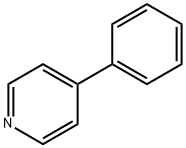BUFFER SOLUTION
Synonym(s):4,7-Diphenyl-1,10-phenanthroline disulfonic acid disodium salt hydrate;4,7-Diphenyl-1,10-phenanthrolinedisulfonic acid;4,7-Diphenyl-1,10-phenanthroline-disulfonic acid disodium salt trihydrate;Bathophenanthrolinedisulfonic acid disodium salt trihydrate;Disodium bathophenanthrolinedisulfonate trihydrate
- CAS NO.:53744-42-6
- Empirical Formula: C24H17N2NaO6S2
- Molecular Weight: 516.52
- MDL number: MFCD00038854
- EINECS: 258-740-7
- SAFETY DATA SHEET (SDS)
- Update Date: 2024-12-18 14:15:30

What is BUFFER SOLUTION?
The Uses of BUFFER SOLUTION
Use of Buffer HF improved:
- Buffer HF improved dissolves silica films (both thermally grown and silane SiO2) produced on the surfaces of silicon and exposed by photolithography. It also is capable of dissolving doped silica films such as phosphosilica and borosilica glasses as formed in semiconductor processing. The overall chemical reaction is: 4HF + SiO2 SiF4 + 2H2O
- For trouble-free operation Buffer HF improved is recommended in the new technologies for manufacture of semiconductor planar and mesa devices. It is compatible with both negative and positive photoresists. Excellent results with good reproducibility are simple to achieve without undercutting marked oxides, surface staining or device degradation by metallic impurities.
The Uses of BUFFER SOLUTION
Used for pretreatment of planar silicon devices when plating with Nickel plating solution products 44069 and 44070.
The Uses of BUFFER SOLUTION
Use of Buffer HF improved:
Buffer HF improved dissolves silica films (both thermally grown and silane SiO2) produced on the surfaces of silicon and exposed by photolithography. It also is capable of dissolving doped silica films such as phosphosilica and borosilica glasses as formed in semiconductor processing.
The overall chemical reaction is: 4HF + SiO2 SiF4 + 2H2O
For trouble-free operation Buffer HF improved is recommended in the new technologies for manufacture of semiconductor planar and mesa devices. It is compatible with both negative and positive photoresists. Excellent results with good reproducibility are simple to achieve without undercutting marked oxides, surface staining or device degradation by metallic impurities.
Definition
ChEBI: Disodium 4,7-diphenyl-1,10-phenanthroline 4',4''-disulfonate is an organic sodium salt having 4,7-diphenyl-1,10-phenanthroline 4',4''-disulfonate as the counterion. It has a role as an iron chelator. It contains a 4,7-diphenyl-1,10-phenanthroline 4',4''-disulfonate.
General Description
Improved HF Buffer System with stabilized HF activity - selective solvent for SiO2 used in semiconductor technology of planar passivated devices - transistors, integrated circuits, diodes, rectifiers, SCR, MOS, FET
Advantages:
- Ready-to-use - Economical
- HF activity buffer stabilized
- Excellent process reproducibility
- Does not undercut masked oxide
- Will not stain diffused silicon surfaces
- Avoids contamination on silicon surfaces
- Photoresist coating unaffected
Buffer HF improved is an idealized buffer preparation characterized by a high buffer index and an optimized, uniform oxide-etch rate. The composition of buffer HF improved is precisely controlled by HF activity measurements and electrometric pH. The mass balance corresponds essentially to (HF) + (F) + 2(HF2) for a two-ligand mononuclear complex and the charge balance is (H+) - (F) + (HF2- ). The HF activity is maintained constant through the specific equilibrium constant which regulates the equilibrium reaction between fluoride, bifluoride, and HF buffer components. A second equilibrium constant participates in the regulation of the hydronium in concentration of pH.
Buffer HF improved is produced and analyzed to be essentially free of impurities. Nitrate ions, a common impurity causing stains on diffused silicon surfaces, are specifically removed. Heavy metal impurities, which can lead to degradation of device characteristics, are rigidly controlled under manufacturing process specifications.
Properties of BUFFER SOLUTION
| Melting point: | 300 °C |
| Density | 1.006 g/mL at 20 °C |
| vapor density | 4.9 (vs air) |
| storage temp. | Inert atmosphere,Room Temperature |
| solubility | H2O: soluble |
| form | Liquid |
| color | No Color |
| Exposure limits | ACGIH: TWA 2.5 mg/m3 NIOSH: IDLH 250 mg/m3; TWA 2.5 mg/m3 |
| EPA Substance Registry System | Benzenesulfonic acid, 4,4'-(1,10-phenanthroline-4,7-diyl)bis-, disodium salt (53744-42-6) |
Safety information for BUFFER SOLUTION
| Signal word | Warning |
| Pictogram(s) |
 Exclamation Mark Irritant GHS07 |
| GHS Hazard Statements |
H315:Skin corrosion/irritation H319:Serious eye damage/eye irritation H335:Specific target organ toxicity, single exposure;Respiratory tract irritation |
| Precautionary Statement Codes |
P261:Avoid breathing dust/fume/gas/mist/vapours/spray. P305+P351+P338:IF IN EYES: Rinse cautiously with water for several minutes. Remove contact lenses, if present and easy to do. Continuerinsing. |
Computed Descriptors for BUFFER SOLUTION
BUFFER SOLUTION manufacturer
ARRAKIS INDUSTRIES LLP
New Products
(S)-3-Aminobutanenitrile hydrochloride 4-Methylphenylacetic acid N-Boc-D-alaninol N-BOC-D/L-ALANINOL Tert-butyl bis(2-chloroethyl)carbamate 3-Morpholino-1-(4-nitrophenyl)-5,6-dihydropyridin- 2(1H)-one Furan-2,5-Dicarboxylic Acid Tropic acid 1-Bromo-3,5-Di-Tert-Butylbenzene S-2-CHLORO PROPIONIC ACID ETHYL ISOCYANOACETATE 2-Bromo-1,3-Bis(Dimethylamino)Trimethinium Hexafluorophosphate 4-IODO BENZOIC ACID 3-NITRO-2-METHYL ANILINE 1-(2,4-DICHLOROPHENYL) ETHANAMINE (2-Hydroxyphenyl)acetonitrile 4-Bromopyrazole 2-(Cyanocyclohexyl)acetic acid 4-methoxy-3,5-dinitropyridine 1-(4-(aminomethyl)benzyl)urea hydrochloride 2-aminopropyl benzoate hydrochloride diethyl 2-(2-((tertbutoxycarbonyl)amino) ethyl)malonate tert-butyl 4- (ureidomethyl)benzylcarbamate Ethyl-2-chloro((4-methoxyphenyl)hydrazono)acetateRelated products of tetrahydrofuran








You may like
-
 Buffer HF-Improved CASView Details
Buffer HF-Improved CASView Details -
 BUFFER SOLUTION PH 5.0 99%View Details
BUFFER SOLUTION PH 5.0 99%View Details -
 Buffer Solution pH 5.0 CASView Details
Buffer Solution pH 5.0 CASView Details -
 Bathophenanthroline disulphonic acid disodium salt, GR 99%+ CAS 53744-42-6View Details
Bathophenanthroline disulphonic acid disodium salt, GR 99%+ CAS 53744-42-6View Details
53744-42-6 -
![Bathophenanthrolinedisulfonic Acid Disodium Salt Hydrate [for Determination of Ferrous Ion] CAS 53744-42-6](https://img.chemicalbook.in//Content/image/CP5.jpg) Bathophenanthrolinedisulfonic Acid Disodium Salt Hydrate [for Determination of Ferrous Ion] CAS 53744-42-6View Details
Bathophenanthrolinedisulfonic Acid Disodium Salt Hydrate [for Determination of Ferrous Ion] CAS 53744-42-6View Details
53744-42-6 -
 BUFFER SOLUTION PH 11.0 99%View Details
BUFFER SOLUTION PH 11.0 99%View Details -
 BUFFER SOLUTION pH 11.0 CASView Details
BUFFER SOLUTION pH 11.0 CASView Details -
 Buffer HF improved CASView Details
Buffer HF improved CASView Details